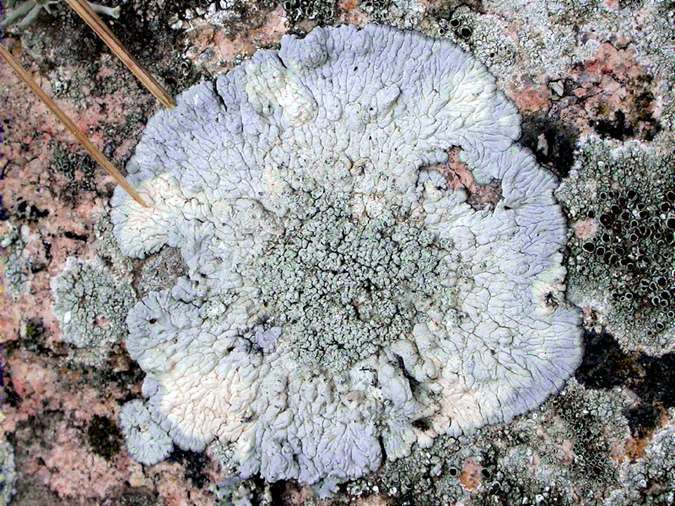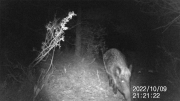Google Adsense Block





| Descripción: | Picture taken on the 1st July 2007 at Aiguablava, Girona, Catalonia, on pegmatitic granite, siliceous rock, vertical position, South oriented. 20 m. altitude. Common lichen in the Mediterranean area. For a long time Diploicia canescens and Diploicia subcanescens were considered different species, "species pairs", but after molecular phylogeny analysis both are the same, and currently it is included in the genus Diplotomma, clearly separated from Buellia. Although the denomination remains controversial, there is enough background for using the genus Diplotomma (priority and separate characters). See the following article: M.C. Molina, A. Crespo, O. Blanco, N. Hladun and D. Hawksworth (2002) Molecular phylogeny and status of Diploicia and Diplotomma, with observations on Diploicia subcanescens and Diplotomma rivas-martinezii, Lichenologist 34 (6): 509-519. For the concept "species pairs" see the chapter "reproduction and dispersal" in Purvis , W (2000). Lichens. Life Series. The Natural History Museum. London. It could be a good idea to do the same with Dirina massilensis f. massilensis and f. sorediata. What is very important is that molecular phylogeny overcomes chemotypes. From the former paper: "D. subcanescens also differed from D. canescens in the presence of gyrophoric acid, but we do not consider that such a single unreplaced chemical warrants the recognition of such a chemotype as a species". The first mentioned article is very useful for material and methods references (DNA extraction, PCR amplification, sequence analysis, isolation and culture of mycobionts), congratulations to the authors. Armand Tomás Vidal Nikon Coolpix 4.500 Autoeye, PH and HTLM Editori |
| Fecha: | 10.07.2007 21:02 |
| Impactos: | 2087 |
| Descargas: | 0 |
| Puntuación: | 0.00 (0 Votos) |
| Tamaño de archivo: | 92.1 KB |
| Envíado por: | atomasvidal |
| Palabras clave: | Lichens, Diplotomma, canescens, Diploicia, molecular, phylogeny, ITS, rDNA, sequence, parsimony, tree, Aiguablava, Girona, Catalonia, Spain. |

